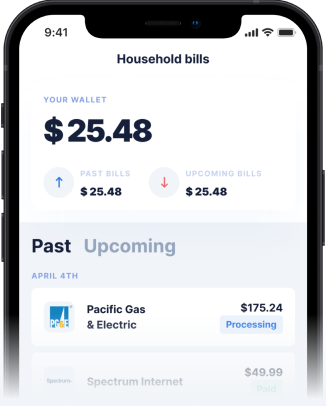Preparing for Tax Season
It’s officially tax season! Although no one enjoys filing taxes, having the right documents on hand and ready to go can make the process less time-consuming. So what documents should you bring to your appointment with your CPA? Or what should you gather before filing your tax return on your own?
If you’re single and work one job, filing taxes will likely be a breeze, and you won’t need to gather as many documents. However, if you’re married, work more than one job, or are self-employed, filing taxes is a little more complicated; so naturally, you’ll also need to have a few more documents on hand.
Whether you hire someone to file your taxes for you or you file online using TurboTax or another service, taking the time to prepare by getting the following documents ready is well worth the effort. Here’s what you need to get started.
Income Documents
When you file your taxes, you confirm the income you brought home the previous year. Although the Internal Revenue Service already knows how much you made, you are legally required to verify this by filing your taxes.
If you work a regular job, you should have received a W-2 form from your employer, either electronically or in the mail. However, anyone who paid you more than $600 over the course of the year is responsible for reporting those payments to the IRS, even if they are not a full-time employer. For example, if you completed any work as a freelancer or a contract worker, you should also receive a 1099 form for that work. These forms simply tell you how much you made for the work you completed on behalf of that business, organization, or individual.
You could also potentially receive other types of 1099 forms, but that depends on the sources of all your income. For instance, if you work a regular full-time job now, but you received unemployment compensation, gambling winnings, or interest income at any point over the last year, you can expect to receive another 1099 form in addition to your W-2 from your normal employer.
These are the types of income documents you may receive in the mail.
- Form 1099 and Form 1099-MISC for self-employment income
- Form 1099-A for foreclosure of a home
- Form 1099-B for proceeds from broker transactions
- Form 1099-C for cancellation of debt
- Form 1099-DIV for dividends and distributions
- Form 1099-G for unemployment income or a state tax refund
- Form 1099-INT or Form 1099-OID for interest income
- Form 1099-K for business or rental income processed by third-party networks
- Form 1099-LTC for long-term care reimbursements
- Form 1099-PATR for patronage dividends from cooperatives
- Form 1099-Q for payments from qualified education programs
- Form 1099-QA for distributions from an Achieving a Better Life Experience (ABLE) account
- Form 1099-S proceeds from the sale of property
- Form 1099-SA for Health Savings Account and Medical Savings Account distributions
- Form SSA-1099 for Social Security benefits
- Form RRB-1099 for railroad retirement benefits
What If You’re Self-Employed?
If you’re self-employed, you’ll need to report that to the IRS when you file taxes. You should also receive a 1099-NEC, which will detail any income you earned as an independent contractor or as an owner of an unincorporated business.
You should also pull out any receipts you’ve kept as an independent contractor, because you can deduct many of your business expenses when you file taxes, as long as the things you purchased are necessary to do your job. Although you don’t have to report these expenses to the IRS, having your receipts on hand can help you support their documentation if you need to.
Social Security Details
One of the most important pieces of information you’ll need to file taxes is your full name and social security number and also those of your spouse and your dependents, if applicable. Whether you file with an accountant or on your own, having those social security cards and another form of ID ready is the best way to ensure that all names and social security details are correct on your tax return.
If you are returning to the same accountant who filed your taxes last year, you can just bring a copy of the previous year’s tax return, which should already include all social security details for you and your family. The only exception might be if you had a new baby in the previous year, in which case you’ll still need to bring ID documentation for the newest member of your family.
Tax Deduction Documents
Tax deductions are important because they can reduce your overall taxable income. As a result, they also reduce the amount of taxes you pay! To document your major deductions, you’ll need several types of forms (detailed below).
- Form 1098: This is your mortgage interest statement. The company that services your mortgage loan will send it to you.
- Form 1098-C: This is for the donation of a car, boat, or aircraft worth more than $500 to a tax-exempt organization.
- Form 1098-E: This is for the interest you paid on a student loan during the preceding year.
- Form 1098-T: This is the tuition statement. It details how much you paid in tuition for postsecondary education.
- Form 1040ES copies: These are a record of estimated tax payments made.
You may not receive all these different forms before tax time, but you’ll want to hold on to the ones you do get. That way, you’ll have them ready and easily accessible when you go to file your tax return.
Receipts for Expenses
As we mentioned earlier, you should keep all your receipts for business-related expenses if you’re self-employed. However, you can also deduct expenses from your personal income taxes if you save your receipts.
There are several different types of tax-deductible personal expenses, including:
- Medical bills
- Some educational expenses
- Charitable donations
- Contributions to your individual retirement account (IRA)
If you’re not sure which personal expenses you can deduct, ask your accountant. They will be able to provide the most accurate guidance based on your personal circumstances.
Above-the-Line Adjustments
You could also potentially increase your tax refund with above-the-line adjustments. Above-the-line adjustments are expenses that are deducted to calculate your adjusted gross income (AGI).
Some examples of above-the-line adjustments are:
- Health insurance premiums
- Educator expenses like teaching supplies, books, etc.
- Alimony paid (not child support or settlement)
- Health Savings Account (HSA) and Medical Savings Account (MSA) contributions
- Tuition and fees
Although you can take these deductions in addition to your itemized deductions when you file, certain rules and limitations apply. A CPA can help you determine which deductions and above-the-line adjustments you should take.
How to Claim Tax Credits
Tax credits reduce the amount of money you owe to the IRS, so you should definitely claim them if you are eligible!
There are several tax credits available to claim for this tax season, including:
- Child tax credit: For families with qualifying children
- Earned income tax credit: For those with lower income
- Adoption credit: For some of the expenses paid to adopt a child
- Recovery rebate credit: For any stimulus payments you did not receive but were eligible for
- Saver’s credit: For contributions you made to eligible retirement plans
Again, if you’re not sure which tax credits you can or should claim, an accountant can help you figure it out so you can get the largest possible tax return.
What to Bring to Your Accountant
When you meet with your accountant to file your taxes, you’ll need to bring all of the above information and documentation that applies to you and your situation. If you decide to prepare your own tax return using TurboTax or another tool, you will still need all of the above information.
If you’re filing with an accountant for the first time this year, you’ll want to make sure you bring your spouse’s, your children’s, and your social security cards and another supporting document, like a driver’s license, for identification purposes. You can also bring a copy of the previous year’s tax return, which should have all of that information in it already.
Also, consider how you’ll want to receive your tax return. If you’d like the IRS to deposit it directly into your bank account, you’ll need to bring your account number and bank routing number to set that up.
Learn More With Gerald
Gathering all the necessary documents to file your taxes might seem like a lot of work, but preparing beforehand will make the process much easier. With Gerald, you can easily document and track your expenses throughout the year, making tax time much simpler.
Gerald is a buy now pay later app that offers several great features to help you get organized. From our bill tracker, which keeps you paying on time every time, to our handy cash advances that help you cover bills when you come up short, Gerald can support you in getting your finances in order. Download the Gerald app today and create your account to get started!


